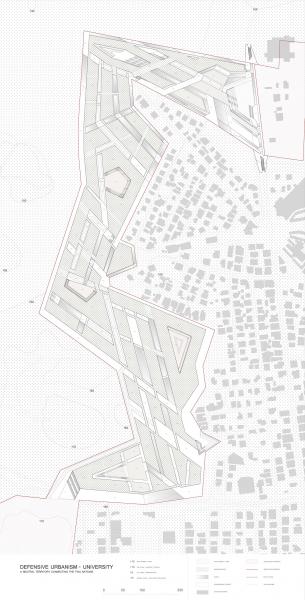
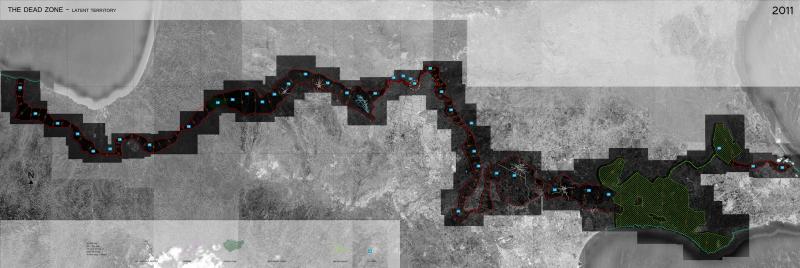

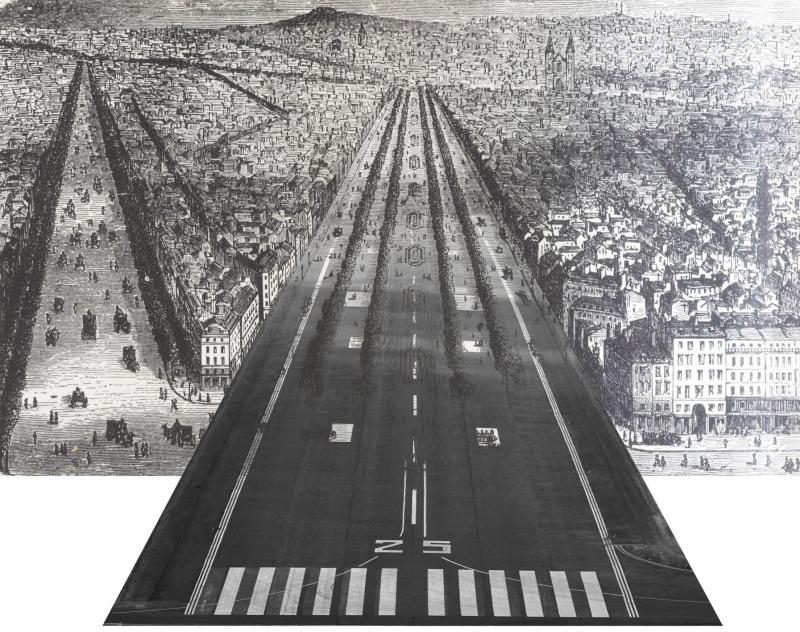
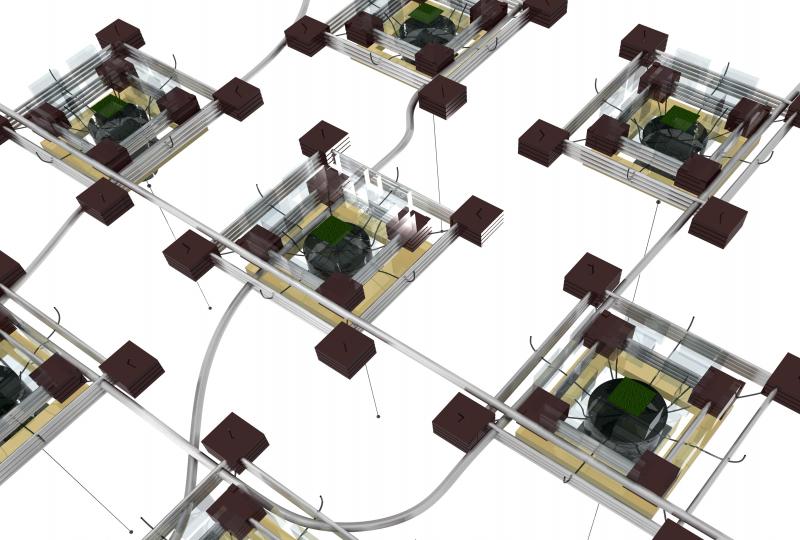

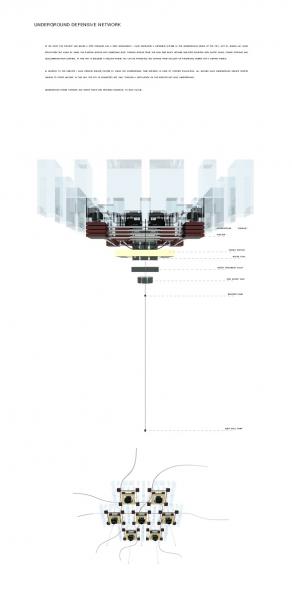
An urban skeleton is structured on principles and strategies responding on certain threats regarding conflicted geopolitical situations. Targets have been identified and deled accordingly, through architectural mechanisms. The project responds on threats by setting up a manual of defensive systems, transforming daily use programmes into simultaneous conditions. Applications take place on typical urban elements, such as block typologies, street hierarchies and infrastructural strategies creating a composition in an urban scale. A double sided network is delivering attributes that generate the right conditions at both times, peace or conflict.
A defensive urbanism is sited in Cyprus which is part of a group of countries that have on-going geopolitical conflicts; a friction between two communities. A post-war defensive product since 1974 has been the buffer zone, which divides the island into two. 183 km of land became a latent territory since no one but the United Nations have access and control.
In this way, the two communities (Turkish Cypriots and Greek Cypriots) have controlled movement on crossing from one side to the other only through certain checkpoints. This project is proposing a series of programmes, designed through defensive attributes in order that people can either cross the buffer zone or in a further extend to inhabit. Architecture will replace militarized zones and post-war environment by having yet neutral by-communal activities. Social interaction is the additional key element into this conflicted situation.